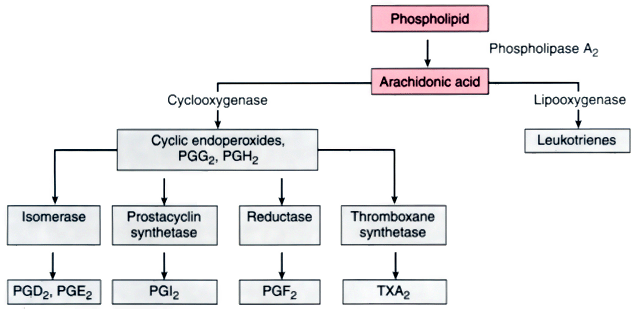 |
 |
Figure 20-18
Synthesis of renal prostaglandins. Phospholipase A2
is stimulated by ischemia, norepinephrine, and angiotensin II and cleaves arachidonic
acid from its bond with membrane phospholipid. Cyclooxygenase acts on arachidonic
acid to form evanescent cyclic endoperoxides (PGG2
and PGH2
).
The action of isomerase and prostacyclin synthetase culminates in formation of the
vasodilator prostaglandins PGD2
, PGE2
, and PGI2
(prostacyclin), which oppose the action of the renin-angiotensin system on the kidney
and protect against ischemic stress. Inhibition of cyclooxygenase by nonsteroidal
anti-inflammatory drugs predisposes the kidney to damage. Under hypoxic or ischemic
conditions, cyclic endoperoxides undergo reduction to the vasoconstrictor PGF2
,
which acts on thromboxane receptors. Endotoxin increases the activity of leukocyte
lipoxygenase and thromboxane synthetase. Leukotrienes (especially C4
and D4
) and thromboxane (TXA2
) induce renal vasoconstriction
and contribute to the vasomotor nephropathy of sepsis.

 |
